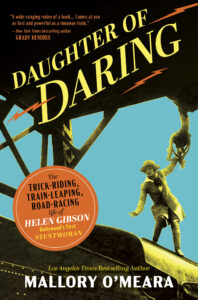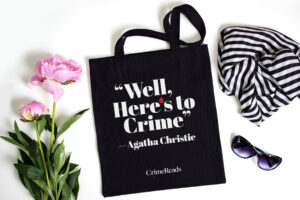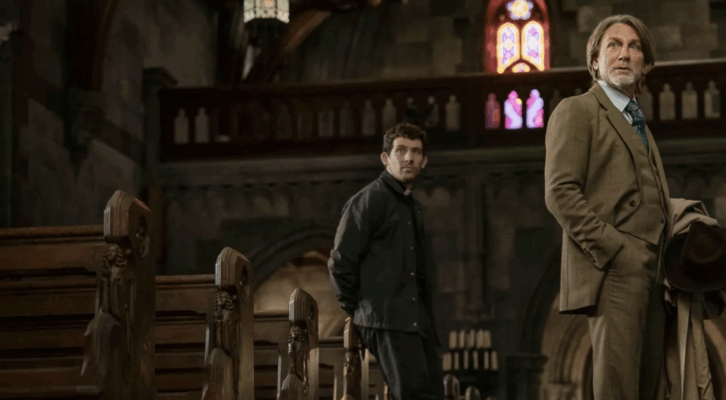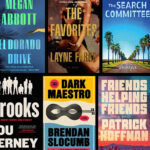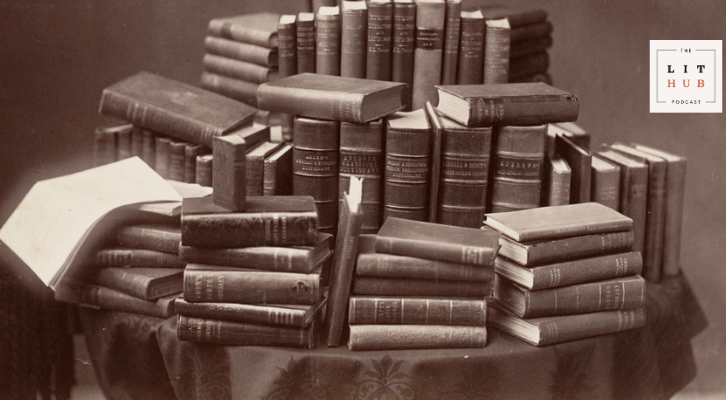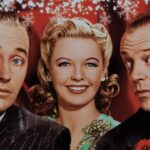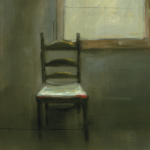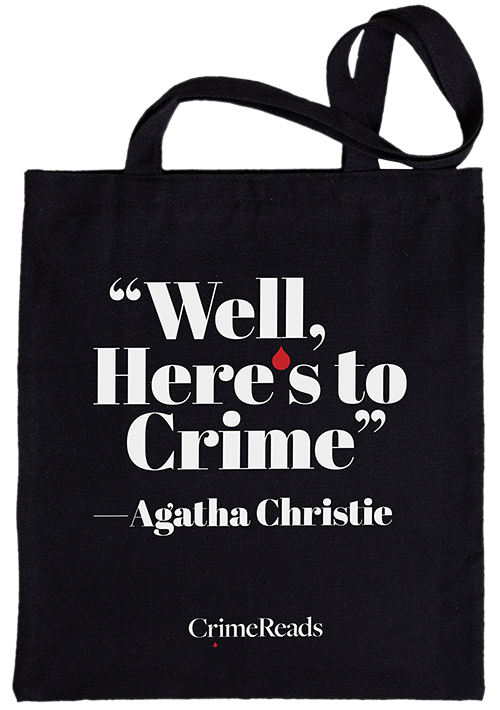The moment “A Test of Courage” was released, America fell in love with Helen Gibson.
Critics loved the new star of The Hazards of Helen and had effusive praise for her performance. Motion Picture News reported that “Miss Gibson, by exhibition of unusual feminine daring”…”gives foretaste of excitement,” and that Kalem kept their promise that “there will be no let-up in thrills.”
Most importantly, however, was the praise of the fans. The extra care Helen took to raise the stakes of each stunt, to push herself to the limit, to make each episode as thrilling as possible, was immediately noticed by audiences. Helen had single-handedly taken the show to the next level, and Hazards of Helen fans new and old were enthralled. They adored Helen, and every Saturday for the next few months, flocked to movie theaters to see the brave telegraph operator’s next adventure. An exhibitor in Indiana reported that “We find the Hazards of Helen railroad series constantly increasing in popularity.”
A month later, Kalem had a big announcement to make. With the overwhelmingly positive response to their “new Helen,” it was clear that Kalem must continue the series. If fans had rejected Helen, Kalem might have never released the rest of the run. Now the studio would not only release all the episodes, they wanted to make more. This was obviously wonderful for Helen and the whole crew, but it also made history. With the November release of the fifty-third episode, titled “The Girl and the Special,” The Hazards of Helen officially became the longest running serial, more than The Perils of Pauline, The Exploits of Elaine, or any other serial headed by hero or heroine. Helen was now a queen among serial queens.
The benchmark was a huge deal in the trade magazines and many of them featured articles about the series. Moving Picture World noted that thanks to “requests by many exhibitors,” the series would continue “indefinitely.” Motion Picture News wrote that The Hazards of Helen “is an example of what quality will do for a series” and that it “seems likely to run on forever…it is actually increasing its hold upon the public.” The same article included feedback from theater owners around the country, including one theater owner in Kentucky, “There has never been anything like [The Hazards of Helen] for genuine thrills and hairbreadth escapes. My patrons wait with keenest anticipation for the next episodes….For the past fifteen years, I have exhibited almost every class of picture that has been filmed, but [The Hazards of Helen] possesses a fascination for me that is simply indescribable.” Another owner in Brooklyn said that he believed the series had any other serial “beaten by a mile” and that it made “the patrons come back for more.”
To capitalize on this wave of adoration from fans, Kalem raced to create The Hazards of Helen merchandise. Serial queens were major stars and almost every studio that was putting out serials (which was practically all of them by now) developed a wide array of items to sell to fans, including posters, postcards, pennants, and other products that didn’t start with P. Serials helped launch a new film business model that included extensive marketing and multimedia tie-ins. This was the next development in the star system; not just using names to sell movies, but goods, as well.
The short tie-in stories for the serials were wildly popular. Sixty major newspapers published them, with a combined readership of eighty million. In 1915, the United States had one hundred million people living in it. That means that most of the country was exposed to these stories, even if they didn’t read them (and many did). They were also helpful for theatergoers during the silent film age, because even with title cards, it could be difficult to pick up on finer plot details.
Of course, it wouldn’t be an American film if its viewers weren’t being sold something. While serials were being advertised in women’s magazines and sewing pattern monthlies, so were the clothes the heroines were wearing in them. In many serials, the camera lingers on whatever the main character is wearing. Serial queens often sported luxurious outfits and were covered in feathers, furs, and silks. These clothes helped sell the fantasy that serial queens had it all: power, freedom, and glamor.
Seeing as her show was about a telegraph operator, not an adventuring heiress, Helen was a bit less glamorous than some of her colleagues. However, quite a few episodes of The Hazards of Helen featured her in smart (but practical) outfits.
Out of all the film genres, serials were most suited for fan culture. Not only did most of them use the actor’s real name, which blurred the line between fiction and reality, but they encouraged their audiences to identify with and become enamored by their heroines. Quickly, serials developed a devoted, fanatic following.
These fans were hungry for more information about their favorite serial queens, and magazines were happy to deliver. Two of the most popular magazines were Ladies’ Home Journal and Photoplay, both of which developed the concept of Hollywood gossip as real news. Actors got interviewed for personal profiles that contained information about their backgrounds, their hometowns, their beauty routines, and their romances. It turns out that stars have been hounded to drop their skincare routines for over a hundred years. Readers clamored for the hot gossip and beauty tips, but deep down, what they really wanted was to compare their own lives to that of their heroes. If their favorite serial queens came from humble origins, maybe they had a shot at greatness, too.
Instead of just being a mysterious screen presence, actors’ personas now had to include parts of their real lives. Fans wanted to see publicity photos, wanted to meet them at personal appearances, read in-depth interviews, and see them do promotional stunts as if they were really the characters they played on screen. Today, this is a given part of the job for actors. In the late 1910s, however, it was a new trend, and serial fandom helped develop this type of journalism. Celebrity culture rose in popularity alongside serials.
One thing that hadn’t been invented yet, however, was factchecking. Instead of offering their real biographies, studio publicists concocted backstories for serial queens that tied into their characters. For Helen, this meant fudging her childhood details to be more like Helen Holmes’s. She suddenly had a father who was a train clerk that raised her among giant engines, and grew up in California as a “real” Westerner. Motion Picture News reported that “she actually ran her father’s locomotive when but twelve years old.” That’s publicity, baby!
One thing fans loved to read about was the athletic abilities of their heroines. Knowing that their favorite stars could actually do all the feats they saw up on screen made their theater experience all the more thrilling. Helen Holmes, for example, told reporters that she could bust her seams by “doubling up her biceps” and that being strong was “essential for the modern woman.”
As a whole, journalists struggled to write about serial queens. They wanted to highlight the (what seemed to be) novel strength and ability of these women, but also wanted to assure readers that the actors were ladylike. Don’t worry folks, these ladies aren’t losing their femininity just because they can punch a robber’s lights out. After a paragraph about a heroine’s big muscles, the writer would immediately praise her beauty or remark on her charm, maybe even tell readers about some domestic hobby the serial queen loved, such as sewing. Whether or not these hobbies were real, it’s hard to say. Helen was said to “love trimming hats” which seems…a little tame for her. Writing about strong ladies was a tough job in the late 1910s, when brawn and beauty were considered mutually exclusive.
Magazine and newspaper editors soon realized that female readers could best be reached by female writers. In the Midwest, Audrie Alspaugh, or as she was known to the Chicago Tribune, Kitty Kelly, was a massively influential film writer. Historian Jan Olsson says that she could “make or break a film” with Midwest audiences. Her column, titled “Flickerings from Filmland,” was read by over a hundred thousand people. The Women Film Pioneers Project says that Alspaugh’s “own sense of judgment and taste was always so perceptive that her criticism often served to ‘train’ fans in what to look for while watching movies.” She encouraged her readers, many of them women, to assess the narrative construction of a motion picture, to pay attention to its atmosphere and editing.
The queen of film writing, though, was Louella Parsons. Regular columns devoted to film reviews began to pop up in newspapers in the mid-1910s, and in 1914, Parsons wrote America’s first Hollywood gossip column for the Chicago Record Herald. If you wanted to know which stars and filmmakers mattered—and why—you went to her. She eventually formed a strong business relationship with newspaper mogul William Randolph Hearst, who syndicated her Hollywood column for the Los Angeles Examiner. At the height of her influence, Parsons was read by twenty million people in hundreds of newspapers all over the world.
As much as her creation came to harm many women in the industry over the next few decades, Parsons originally conceived her column as a space to champion them. She gave the majority of her coverage to the struggles and achievements of actresses, directors, and screenwriters, much more than she wrote about men in the business. Parsons explored the topic that was on many women’s minds in the late 1910s: What did femininity mean in the era of the New Woman? Which actresses and filmmakers were presenting femininity successfully and how to emulate them?
Parsons also enthusiastically encouraged her female readers to try their luck in Hollywood. She herself moved to Los Angeles, found career success there, and stayed for the rest of her life. As a journalist writing about all the incredible women conquering motion pictures, she saw what an opportunity this new city and this new industry was.
She believed this was an age for “women-made women.”
Parsons and her colleagues were pioneers in a business that was, and still is, dominated by men. According to the Center for the Study of Women in Television and Film, even though women today make up half of film audiences, male reviewers outnumber female reviewers by more than two to one. First conducted in 2007, Thumbs Down is a study that considers the representation of individuals working for print, radio, television, and online outlets in the US and whose reviews appear on one of the country’s most popular sources for film reviews, the website Rotten Tomatoes. In the opening months of 2022, men comprised 69 percent of reviewers, while women made up 31 percent, and nonbinary reviewers less than 1 percent. The real bummer is that for female reviewers, this is actually a decline from the 35 percent they made up in 2020. Further, male critics outnumber female critics in every job category, type of media outlet, and film genre considered.
The study also found that male reviewers award slightly higher average quantitative ratings to films with male protagonists than women reviewers, that films directed by women comprise a smaller proportion of reviews by men than women, and that when reviewing films directed by someone of their own gender,. male and female critics are more likely to mention the name of the director in their review.
What does this mean? People care about people who are like them. Consequently, people care about art that is made by people who are like them, whether they are conscious of it or not. This is why it’s important to have representation from all types of film reviewers. It seems like a crap idea to have the people publishing film reviews be unrepresentative of the film’s audience. Author Mary Robinette Kowal put it best when she tweeted in December 2014, “It’s not about adding diversity for the sake of diversity, it’s about subtracting homogeneity for the sake of realism.”
Film writing was quite different in the days before Rotten Tomatoes. The internet has both greatly improved and degraded the world of movie reviews. On one hand, it has opened up the field to marginalized writers who have a harder time breaking into the world of film journalism. On the other, it feels strange to be able to assign an algorithmic grade to something as subjective as art.
While female filmmakers in the 1910s did not have to worry about their projects being “Certified Fresh,” they did have to worry about bad press. Not every journalist was as excited about women-owned production companies as Louella Parsons was. Photoplay called it a “her-own-company epidemic,” as if these women’s companies were simply cutesy little projects, to be shelved next to their dollhouse and Easy-Bake Oven.
To the dismay of these party-pooping sexists, this epidemic continued its spread. As film historian Karen Ward Mahar says, “Women in the American film industry had thus far enjoyed more latitude and leverage than women in any other industry…”
___________________________________


